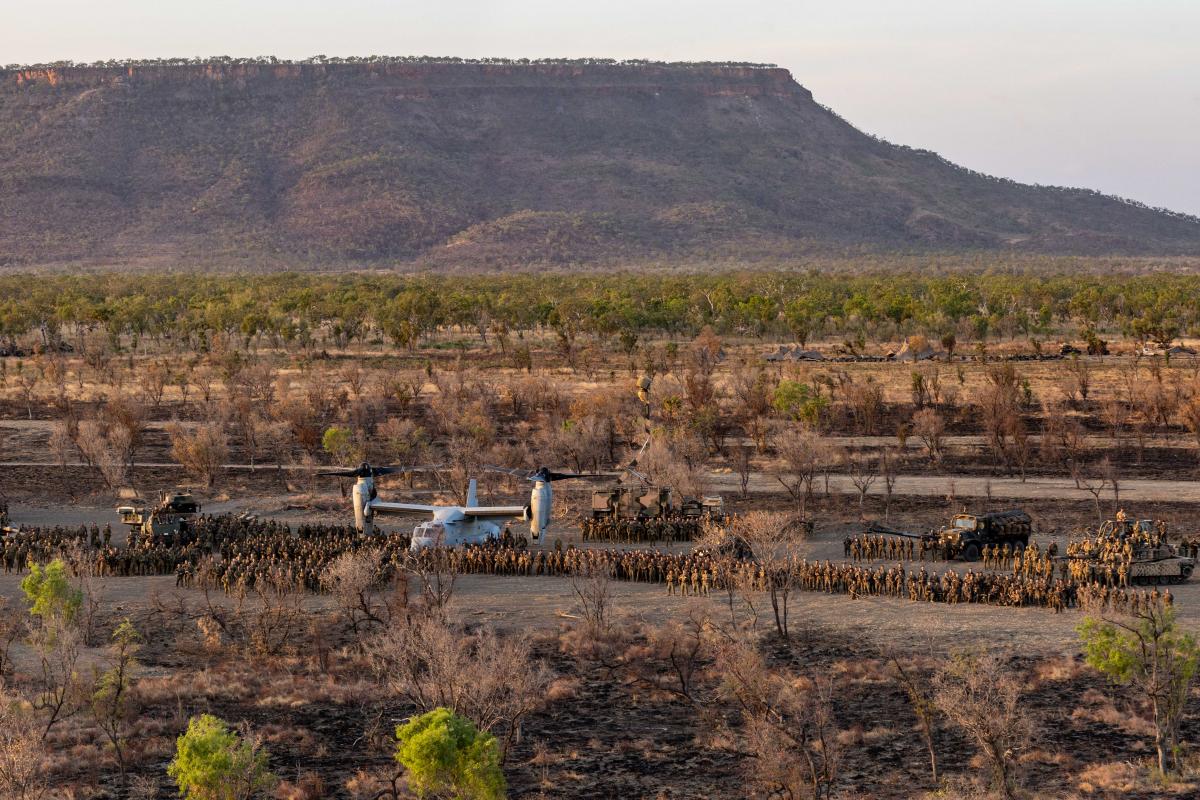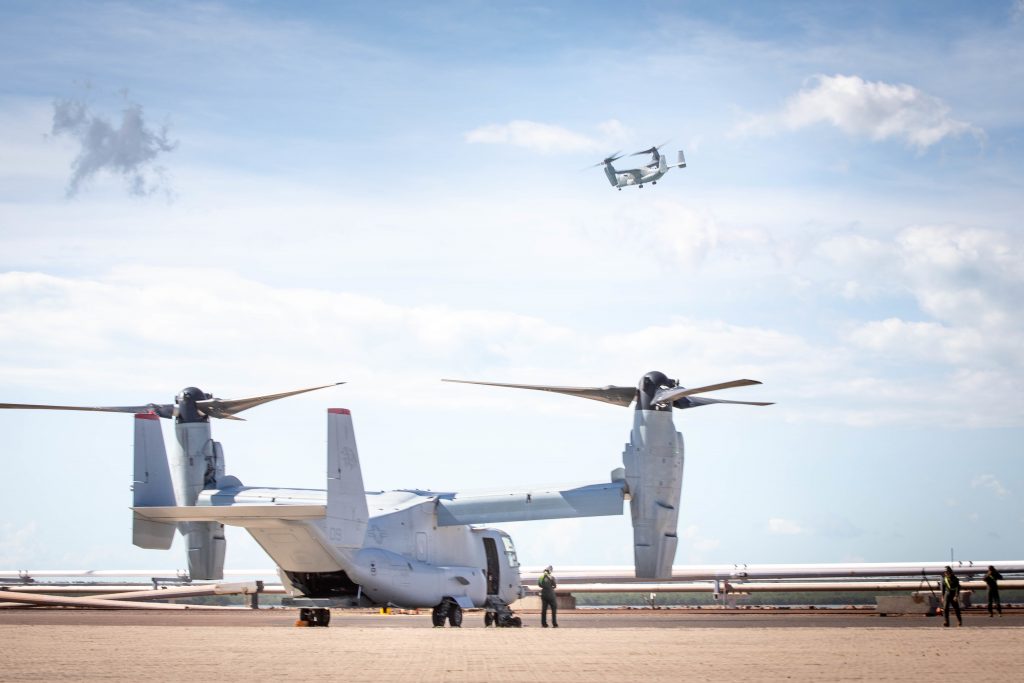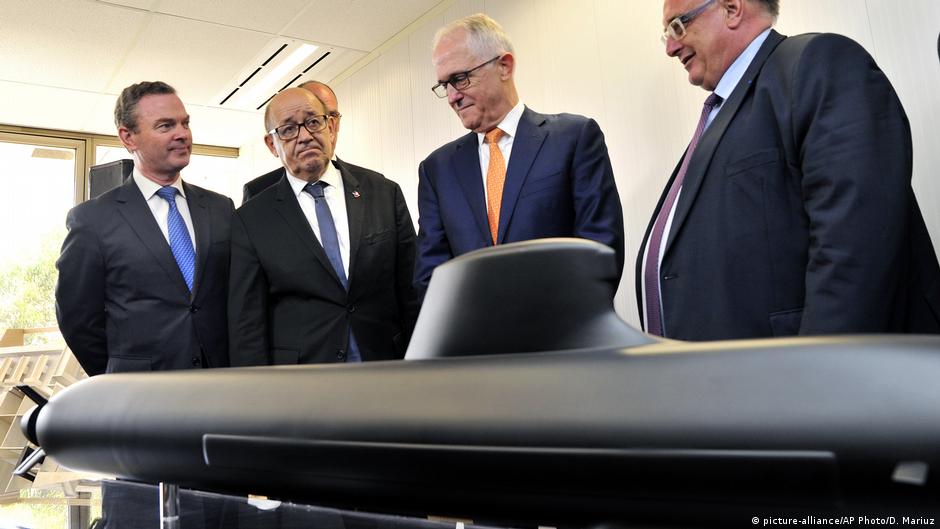By Pierre Tran
Paris – France heaped bitter resentment on Canberra’s axing an industrial partnership to build 12 attack submarines for the Australian navy, while opting to order American-designed boats as part of a strategic alliance with the U.S. and the UK.
The French foreign and defense ministers filled on Sept. 16 the airwaves with anger in response to a joint announcement the night before by Australia, the UK and the US of their alliance, dubbed AUKUS.
Under that trilateral agreement, the U.S. will release highly sensitive technology to allow Australia to build nuclear-powered submarines of American design, with support from the UK. The U.S. has only ever granted Britain privileged access to that know-how.
“I am angry — this is not done between allies,” foreign minister Jean-Yves Le Drian said on franceinfo radio. “This is a stab in the back. This unilateral, brutal, unpredictable decision looks a lot like what Mr Trump used to do.”
France had built a relationship of trust with Australia, he said. “This confidence has been betrayed,” he said, adding that he felt “a lot of bitterness.”
Le Drian was defense minister when the French shipbuilder Naval Group won in 2016 a three-way competition with Germany and Japan to build a diesel-electric version of the French nuclear-powered Barracuda submarine for the Australian navy.
That 50-year deal was estimated to be then worth €30 billion ($35 billion) and was hailed as “deal of the century” for France and Naval Group.
The Australian switch away from building the French-designed Barracuda Shortfin boat was “serious,” and “very bad news for respecting one’s word,” armed forces minister Florence Parly said on RTL radio. The government would look at limiting any financial hit on Naval Group, she said, and did not rule out a claim for compensation against Australia.
That Australian realignment caught Naval Group by surprise as the company had been expecting to sign a contract for the basic design stage in the next few days, under an imposed deadline for a signing in September.
That two-year contract was reported to be worth €1.4 billion and opened the way for a detailed design deal. Naval Group had completed the preliminary design. The Australian media had long criticized the company for being behind schedule and pushing the cost higher.
Naval Group had pledged to meet an Australian condition of 60 percent of local content in the future submarine program and agree to transfer technology.
French operations in the Indo-Pacific
France has invested heavily in forging close operational and industrial ties with Australia, seen as a key ally in the Indo-Pacific region.
The French air force flew in January-February under the Skyros exercise four Rafale fighter jets, two A400M transport turboprops and an A330 multirole tanker transport jet to Australia.
That Skyros exercise was a step toward the target of flying in two years time 20 Rafales and 10 A330 MRTTs over 20,000 km to the other side of the world in 48 hours.
As part of that power projection into the Indo-Pacific, the French navy sailed the Emeraude nuclear-powered attack submarine, supported by the Seine fleet auxiliary ship, from France in September 2020 to dock at Perth, Western Australia, on November 9. The French boat took part in the Foxfish exercise with the Australian navy.
The Emeraude sailed on to the Guam US naval base and sailed in an Aswex anti-submarine warfare exercise with a US frigate and helicopter, and a Japanese helicopter carrier, the July edition of French navy Col Bleu service magazine said.
While France appears to remain committed to building its presence in the Indo-Pacific, ties with Australia and the U.S. look like they are hitting a low.
“This decision is contrary to the letter and spirit of the cooperation which existed between France and Australia, founded on a relationship of political confidence as well as development of a high level defense industrial and technology base in Australia,” Le Drian and Parly said in a Sept. 16 joint statement
“The American choice, which leads to Australia setting aside an ally and European partner such as France from a structural partnership, at a time when we are facing unprecedented challenges in the Indo-Pacific region…marks a lack of coherence that France can only take note and regret,” the ministerial statement said.
Naval Group takes hit
“This is a major disappointment for Naval Group,” the company said in a statement, adding that over the last five years the company and its partners had “given their best” and “delivered on all its commitments” in France and Australia.
Naval Group will sit down with the Australian authorities to consider the effect the policy switch will have.
“The analysis of the consequences of this sovereign Australian decision will be conducted with the Commonwealth of Australia in the coming days,” the company said.
Thales, which is a supplier of subsystems to Lockheed Martin and holds 35 percent of Naval Group, said there was no “material impact” on its earnings. The orders from Lockheed Martin were less than €30 million, or less than 0.1 percent of the order book of €34.6 billion, the electronics company said. The stake in Naval Group contributed €22 million in 2020 earnings, or two percent of total earnings.
But in 2016, Thales had expected its share of the Australian submarine program to bring in some €1 billion, with an estimated €100 million per boat based on prospective sales of sonar and electronic warfare systems.
The Australian decision will have little effect in the short term for Naval Group, as the order book was fairly full with work on the Barracuda nuclear attack submarine and frigate for defense and intervention (FDI), and there were studies for the French next generation aircraft carrier and nuclear ballistic missile submarine, said Jean-Pierre Maulny, deputy director of Institut des Relations Internationales et Stratégiques, a think tank.
But the company needs to boost exports, which will cut dependence on domestic orders and boost its order book for the medium term, he said. Greece is looking to order frigates, while the Netherlands is holding a competition for submarines.
On Greece, France has pitched four FDI frigates, with the first to be built in France and three in Greece, modernization of the present Greek Meko frigates, and local shipbuilding.
There has been an offer of a “gap filler,” with supply of two second hand French frigates, but that appears to be off the cards as the French navy needs all its warships, a defense official has said.
“The U.S. is an ally and also a competitor,” Maulny said.
The U.S. and UK pursue strategic interests, though it would have been courteous for the U.S. to give early notice to France.
London Seeks to Calm Waters
Across the Channel, the UK has sought to play down tension with France.
“As the prime minister set out in the house, we have and continue to have a very close relationship with France,” a spokesman for the prime minister, Boris Johnson, told the Downing Street lobby, the Guardian daily reported.
“We have longstanding security and defense relationships, as exemplified by the Lancaster House treaties and as exemplified by our combined joint expeditionary force.”
The 2010 Lancaster House treaty maintains existing cooperative industrial programs but has failed to generate new arms projects for British and French industry, former British ambassador Peter Ricketts has pointed out.
A senior French navy officer has previously said the 1998 St Malo bilateral agreement between France and the UK created a structure for close operational ties between the two navies.
It remains to be seen whether that closeness will be backed by French political will.
For the UK, building the Astute class of nuclear-powered attack submarines for the Royal Navy was only made possible with U.S .help in technology transfer and engineering skills, media reports have said.
The UK’s membership of the AUKUS trilateral alliance means “Global Britain with the Americans,” Maulny said.
Britain needs to negotiate a trade treaty with the U.S., having left the European Union and cast off the EU trade agreement with Washington which covers the 27 EU member states.
The U.S. working an Australian submarine deal from France follows a widely held perception that president Joe Biden influenced Switzerland’s pick of the F-35 in a closely fought fighter competition.
Meanwhile, British sources told the Guardian daily the Australians opened talks about the nuclear power deal in March.
Australian prime minister Scott Morrison came to Paris in June, and his talks with Macron included French and Australian engagement in the Indo-Pacific and work on the future submarine program.
The sinking of that Australian Barracuda submarine program has prompted France to raise the banner for European strategic autonomy.
“The regrettable decision which has just been announced on the FSP program can only strengthen the need to raise loud and clear the question of European strategic autonomy,” the French ministers said. “There is no other credible way to protect our interest and our values in the world, including the Indo-Pacific.”
Macron takes up in January the rotating six month presidency of the European Union.
It remains to be seen what the German elections will deliver and whether Macron can rely on political support from Berlin in his drive for a stronger European arms industrial base and operational capability.
Featured Photo: France’s Defense minister Jean-Yves Le Drien and Australia’s then-PM Malcolm Turnbull (center right and center left) inspecting the submarine model in 2016







